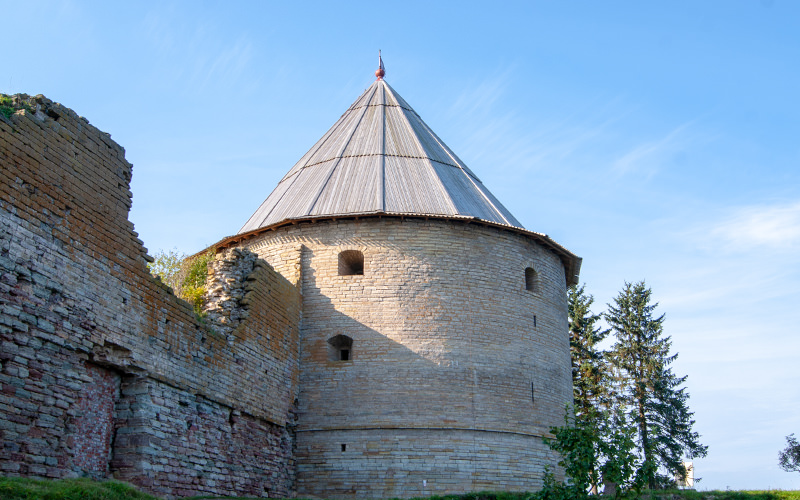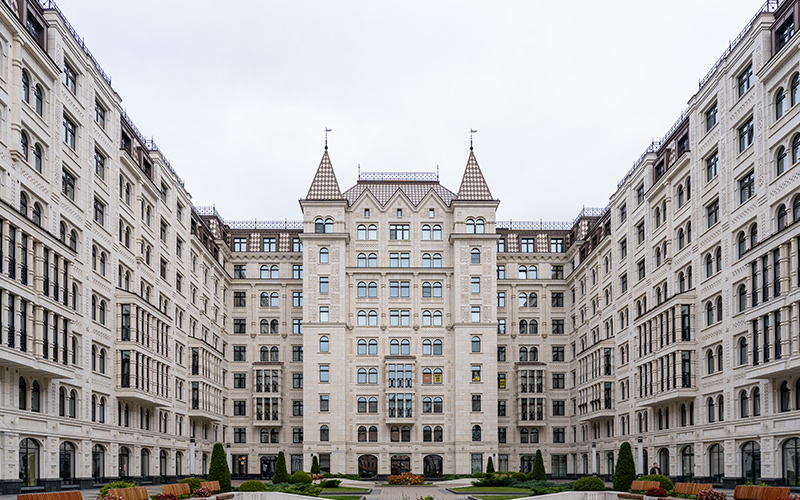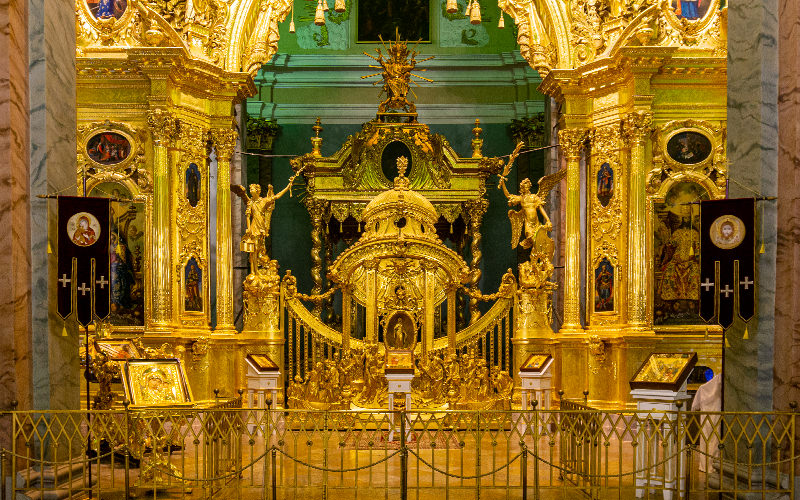Many travelers, even those who are not visiting Istanbul for the first time, make sure to take a walk around the area adjacent to the famous Hagia Sophia. Such a route is an excellent choice, as within just an hour, you can see many landmarks of the ancient metropolis. Today's route also begins at the entrance to the majestic Hagia Sophia complex.

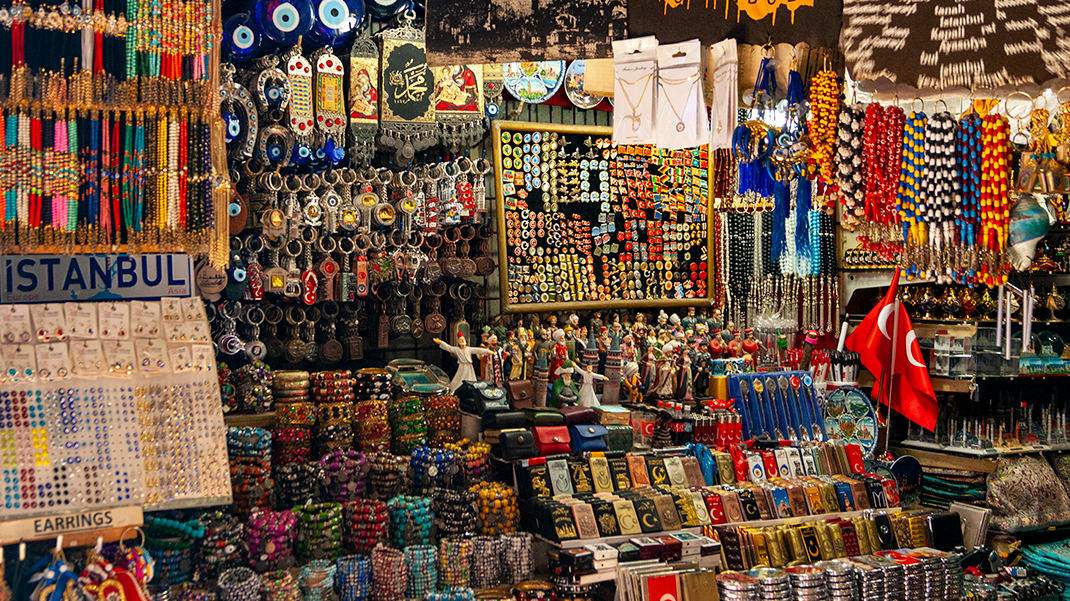
A Bit of History
We are in the heart of Istanbul, in the historic Sultanahmet district. Many significant buildings of the city, which dates back to the 7th century BC, are within walking distance from the start of our route. In sources, you can find references that the entire area of this part of Istanbul, up to the ancient city walls, is called the "Historic Peninsula." Among several guides, I have encountered the term "Old City," although I have never heard residents of Istanbul use such designations.

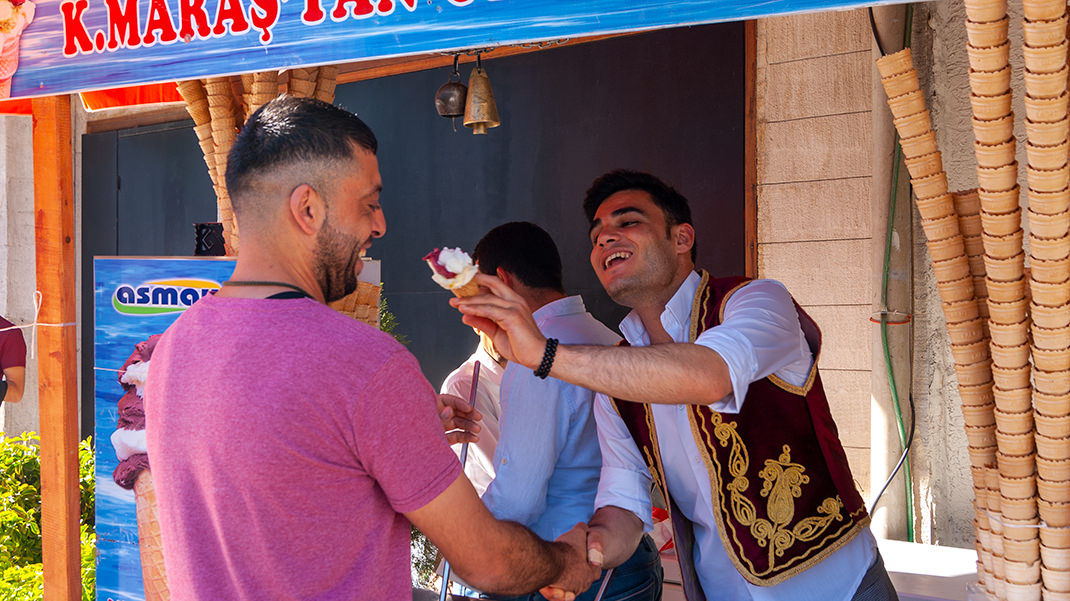
Istanbul was formerly known as Constantinople. Even earlier, there was the ancient city of Byzantium. The modern name of Istanbul was established only in the first half of the 20th century.
Hagia Sophia
The first stop on our route is Hagia Sophia, or the Church of Holy Wisdom. It was built between 532 and 537 on the site of two other buildings that have not survived to our time. The construction involved 10,000 builders. It is no surprise that for many years, Hagia Sophia was the largest church in the world.
With the political changes that followed the capture of Constantinople by the Ottomans, the religious life of the ancient city was also reformed: Hagia Sophia became a mosque.
The cost of admission to Istanbul's museums constantly changes. Since 2020, entry to Hagia Sophia was free, but now visitors need to purchase tickets again. It is best to check the price in advance.
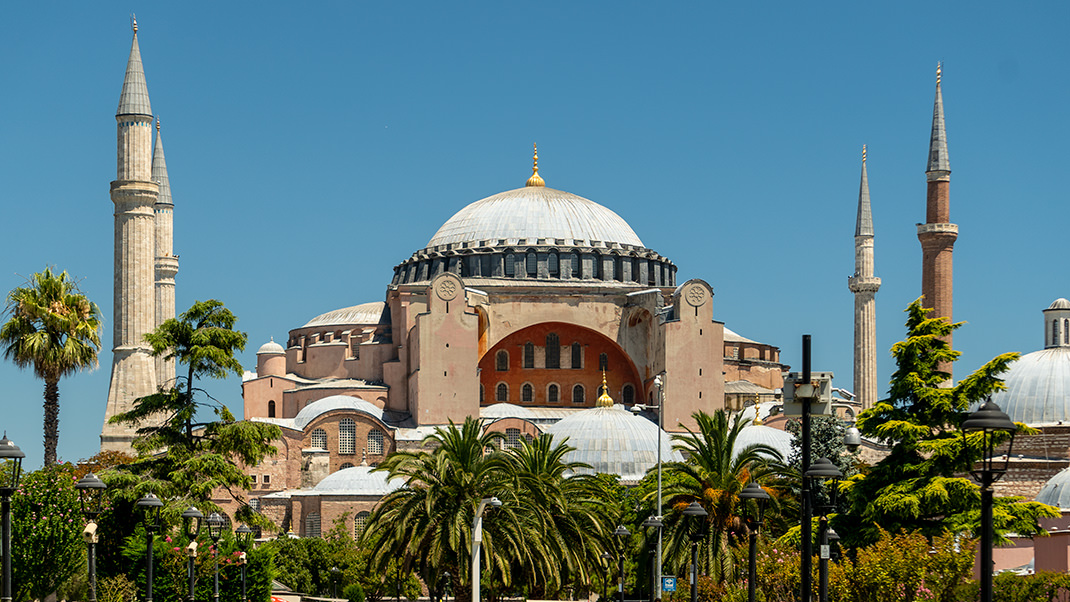
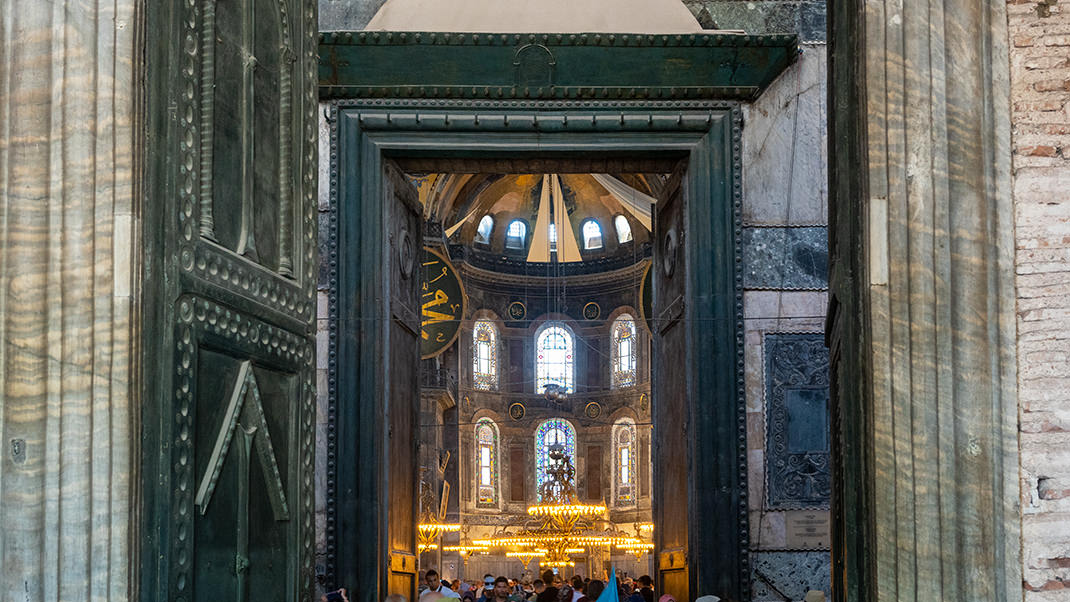
Before heading inside to explore the interiors of Hagia Sophia, take a look at the building itself. It was not always as it is now. To imagine the original appearance of the structure, you need to mentally remove the four minarets of the complex and the buttresses (support walls that increase the strength of structures). These were added to the building due to the threat of collapse in 1573.
Hagia Sophia is arguably the most visited site in Istanbul. During the warm season, the queue of tourists wanting to enter can stretch for several hundred meters. There are far fewer visitors in the evenings, in bad weather, and in winter.
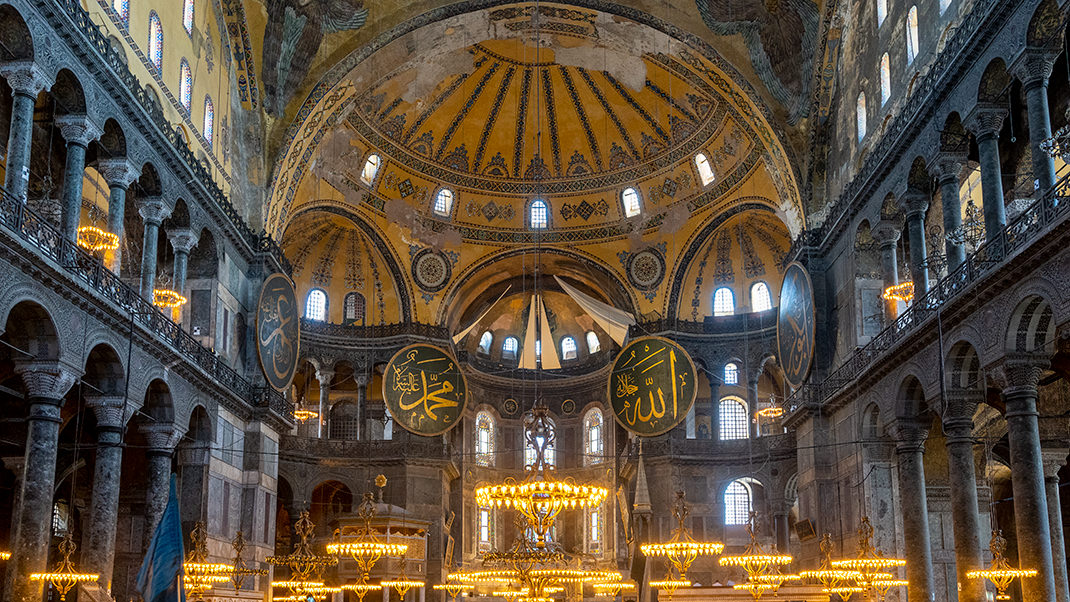
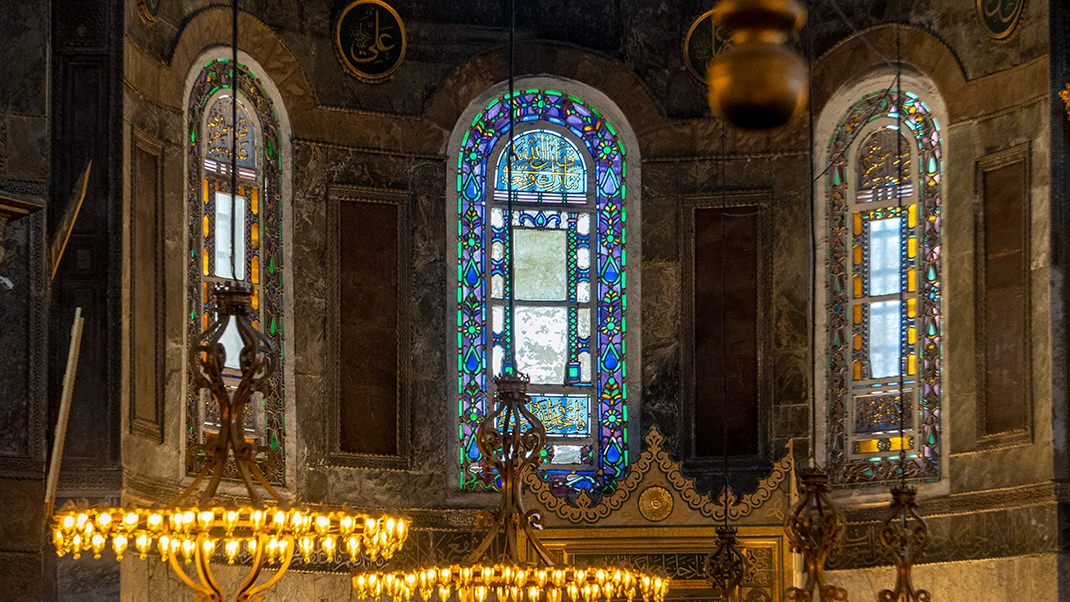
Photography is allowed inside the cathedral. Before entering the main hall, you need to remove your shoes, and women must cover their heads.
Church of St. Irene
The next building on our route today, the Church of St. Irene, is about a five-minute walk from Hagia Sophia. The ancient building is located in the first courtyard of the famous Topkapi Palace in Istanbul. Whether or not to visit the palace itself is up to you. I would only note that Topkapi is not a palace in our standard understanding, as there are no buildings with many luxurious rooms on its territory: the complex consists of several courtyards with gardens and small pavilions, some of which may be closed for various reasons.
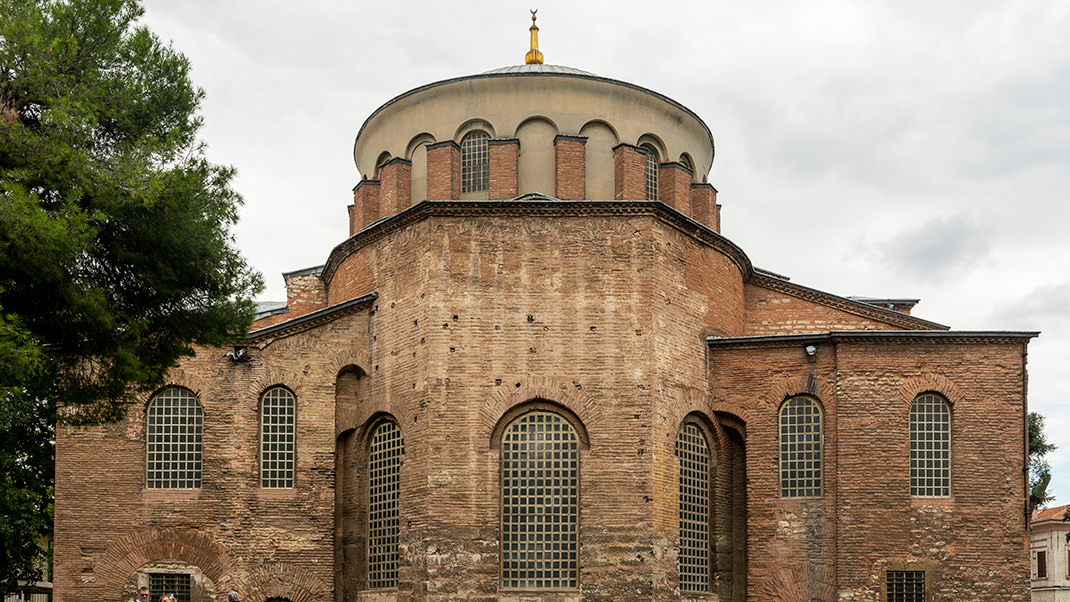

The cost of visiting the Church of St. Irene in the summer of 2024 was 500 Turkish liras. A full ticket with a tour of the palace complex costs 1,500 liras.
The early history of the Church of St. Irene is similar to that of Hagia Sophia. The construction years coincide with the dates of the construction of its "older sister," and the church was also built on the site of an existing building destroyed during an uprising. However, unlike Hagia Sophia, the Church of St. Irene was never converted into a mosque. After the capture of Constantinople, it housed storage facilities, and later the first official museum of the country was opened in the old building.
Blue Mosque (Sultanahmet)
Let's return to Hagia Sophia. Right across from it is another magnificent mosque building, called Sultanahmet, or the Blue Mosque. The complex got its second name because more than 20,000 white and blue tiles with various floral designs were used in its interior decoration.
The Sultanahmet Mosque is a thousand years younger than Hagia Sophia. The building was originally constructed as a mosque during the time when the city was under the control of the Ottoman Empire. Sultanahmet is an active mosque, and entry is free, but visitors must adhere to dress code requirements.
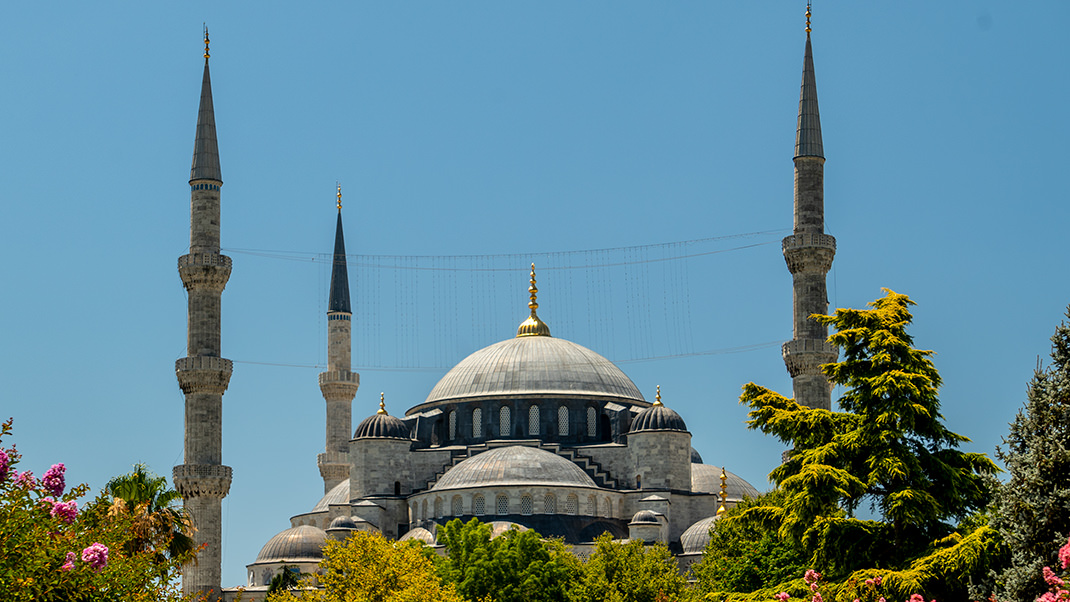
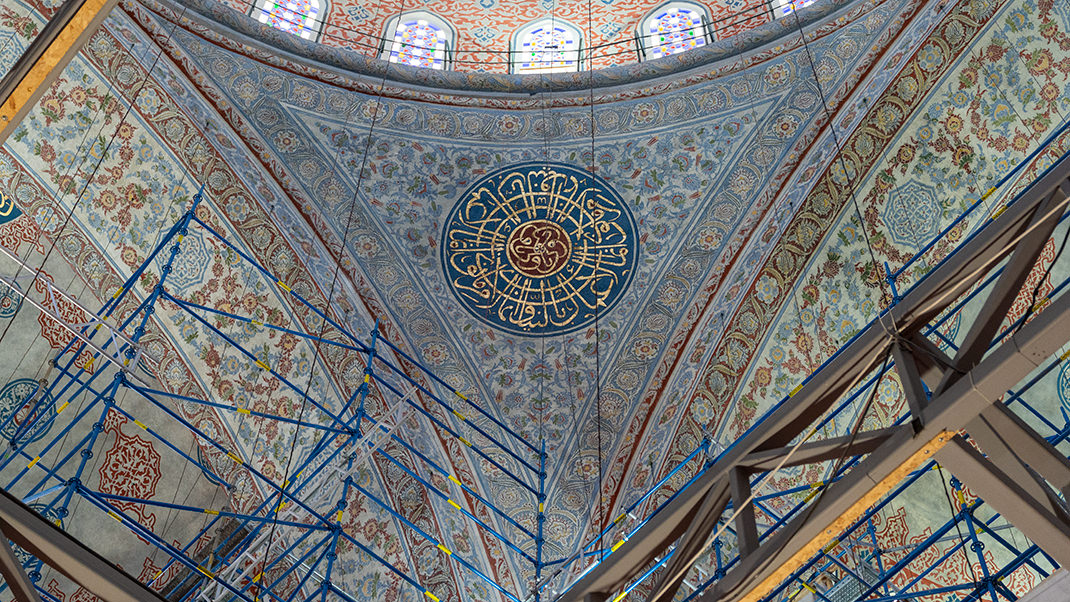
Hippodrome, or Horse Square
We leave the mosque complex through the north gate and arrive at the city's Horse Square. Walk to the German Fountain and look at its configuration. The central part of the space is surrounded by two small roads, and looking at them, it is easy to imagine that the complex of the Constantinople Hippodrome once stood here. It is considered the city's first sports stadium.
The structure was built at the beginning of the 3rd century. The complex could hold about 30,000 people.
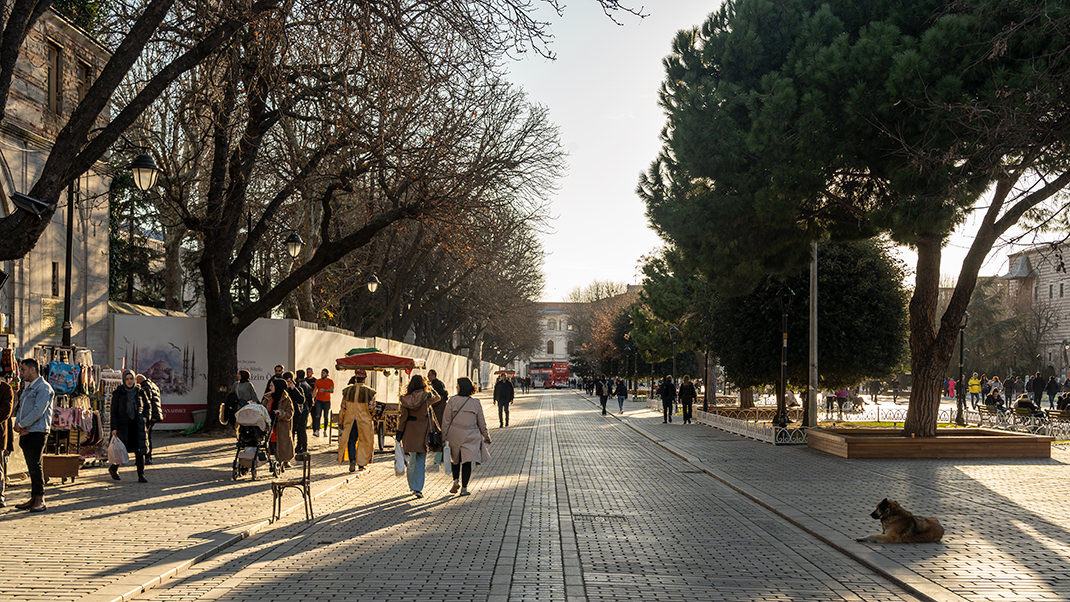
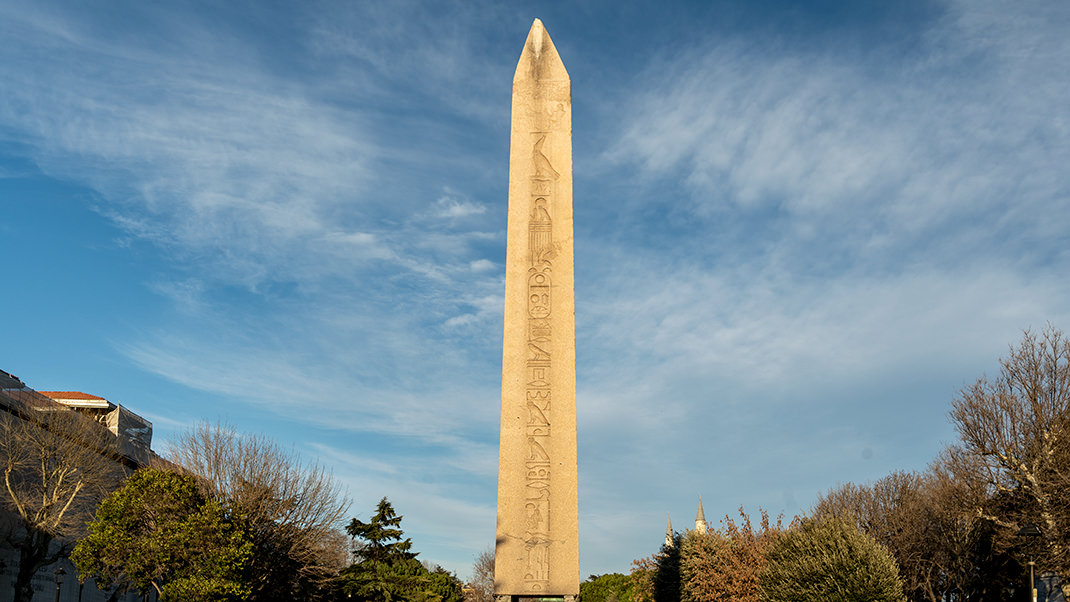
In the central part of the former hippodrome stand three ancient monuments: the Egyptian Obelisk, the Serpent Column, and the Obelisk of Constantine. The first of them, as the name suggests, was brought here from Egyptian Thebes. The obelisk was brought here in 390, and its total age is about three and a half thousand years.
The second object in the square, the Serpent Column, is a small greenish pillar. At one time, three serpent heads could be seen at its top. Guidebooks say that these elements were preserved until the 1700s. One of the books about Istanbul mentions that the monument was destroyed by a drunken Polish diplomat. One part of the column is kept in the Istanbul Archaeological Museum.
The third, farthest from the fountain landmark is the Obelisk of Constantine. It is believed to have appeared here during the reign of one of the two emperors, Constantine the Great or Theodosius I.
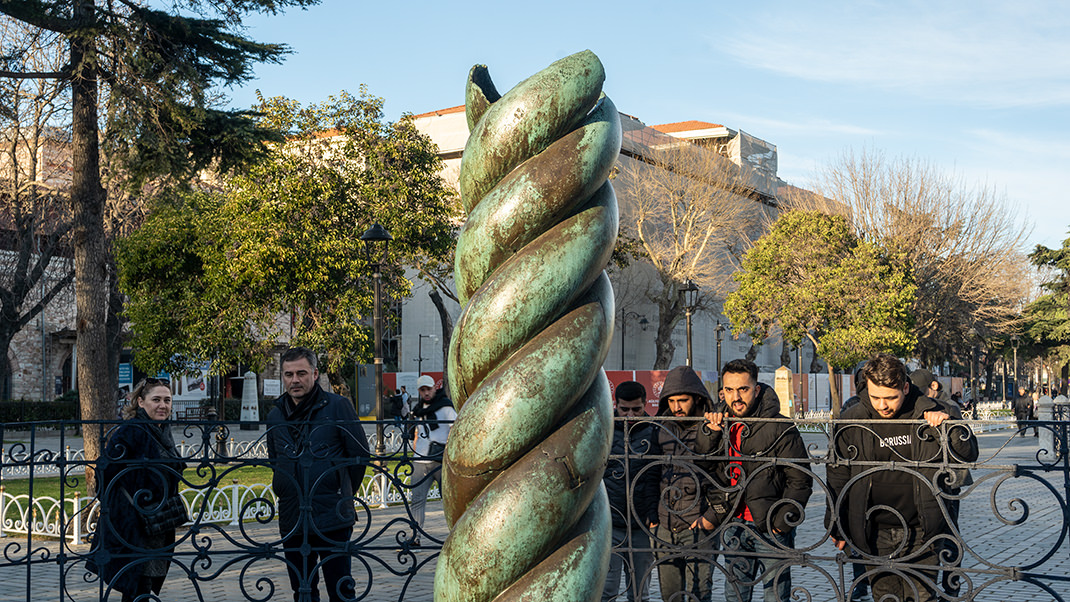
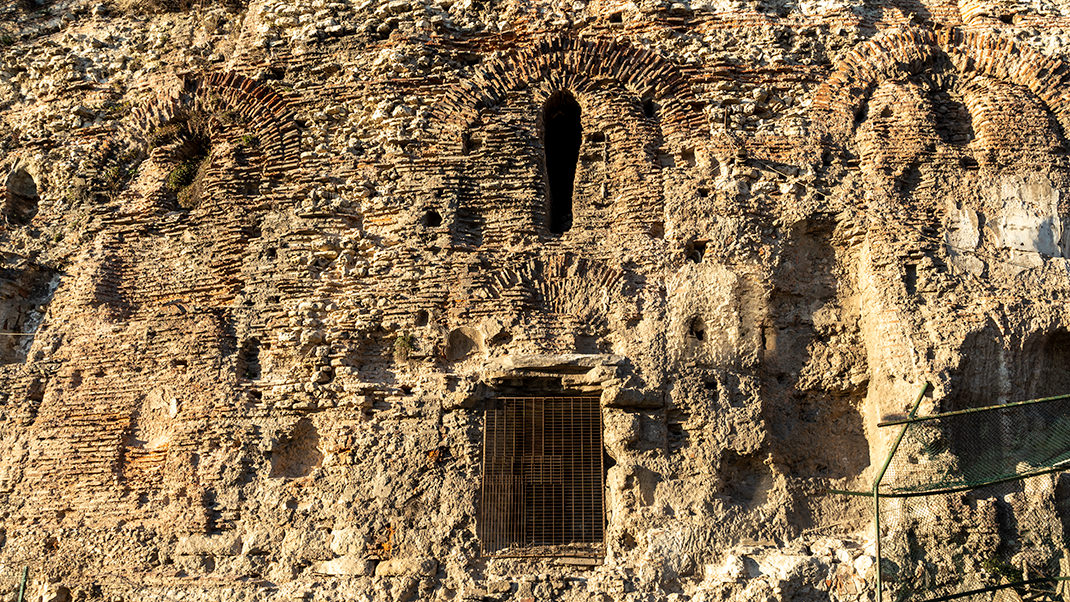
Chariot races continued until the 13th century. By the 15th century, the hippodrome had fallen into ruins, and the remaining materials were used to build the Blue Mosque.
Nakkaş Cistern
If you go further towards the Sea of Marmara, you can find the remains of the Hippodrome walls. Here is another stop on our route today, the ancient Nakash (Nakkaş) Cistern, located under the shop of the same name.
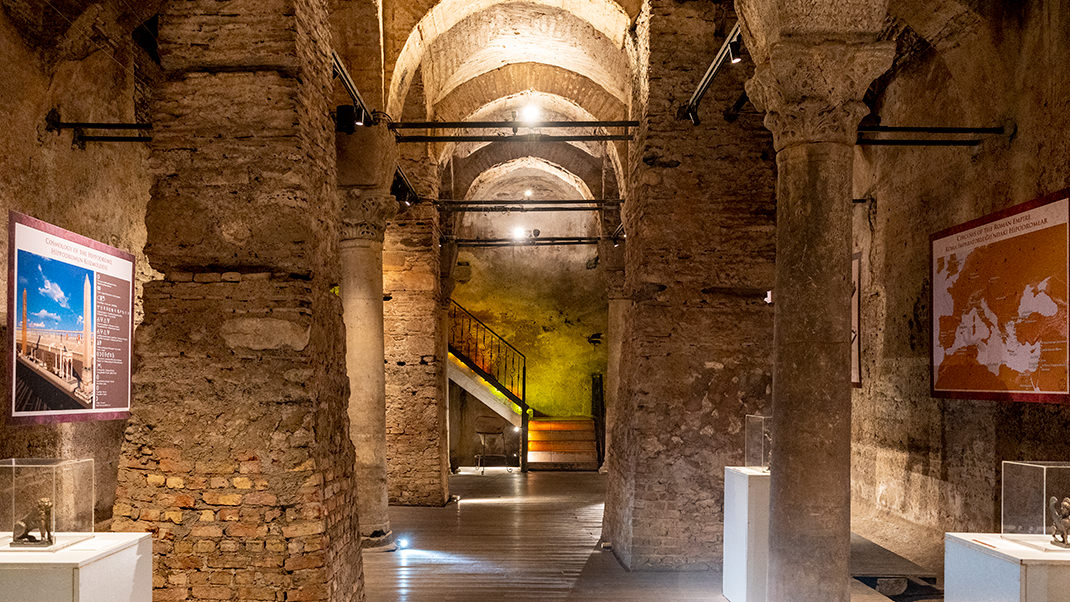
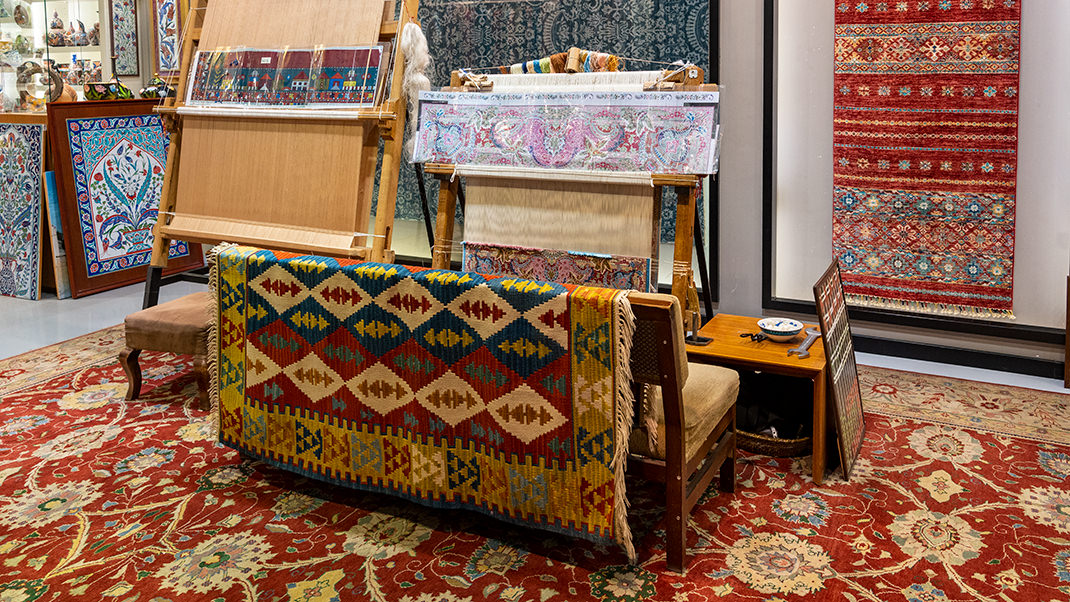
Istanbul's cisterns are underground water reservoirs. About 40 such structures are known. Only a few of them are open to tourists. The Nakash Cistern was built in the 5th or 6th century. Today it is a small exhibition space where you can learn about the history of this ancient district.
Nakash is not as popular among tourists as, for example, the nearby Basilica Cistern, and it does not have the same interesting lighting design as the Basilica, but it is still worth visiting, if only because there are always few tourists in the cistern, and entry to the ancient landmark is free.
Little Hagia Sophia
The last stop on our route in this area is a five-minute walk from the Nakash Cistern. Here is the Little Hagia Sophia Mosque. Although the building does not look much like its majestic older sister, it is worth visiting to see what small and less popular mosques in Istanbul look like.
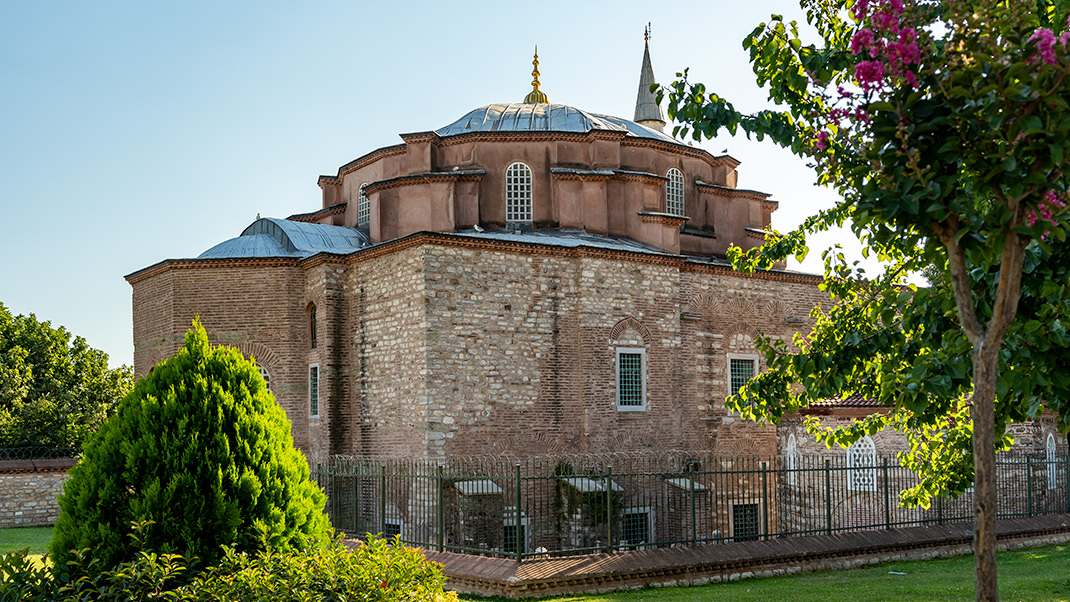

The building was constructed in the first half of the 6th century as a Byzantine church. The former name of the temple is the Church of Saints Sergius and Bacchus. There is an interesting story associated with this name: it is believed that Justinian was once accused of plotting against the ruling Emperor Anastasius. But the ruler had a dream in which the martyrs Sergius and Bacchus appeared to him and convinced Anastasius of Justinian's innocence. It is no wonder that one of the first churches Justinian began building after becoming emperor was named after the saints who saved him.
Little Hagia Sophia is an active mosque, and entry is free.
Have a nice trip!


